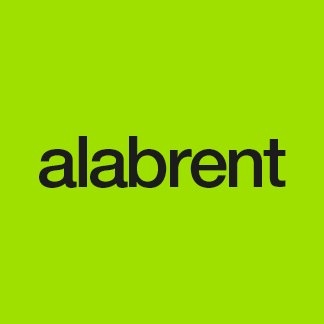Redacción Alabrent
There is much to be said in favour of radiation-curing inks, as world-leading manufacturers of packaging print equipment – and their users -- have already discovered. Because UV inks (and their EB partners, less used in the context of packaging print) cure faster, work throughput is much more positive than with traditional print drying tunnels. Just as importantly, UV inks deliver high-quality, crisp, graphics (partly a by-product of their speedy cure, which reduces the ‘dot gain’ flow tendency of liquid inks). Perhaps most important of all, they achieve all this without emitting any VOCs, making them an environmentally-friendly alternative to solvent-based inks. RadTech Europe is the industry association focused on the use of radiation curing in a number of manufacturing arenas, and it is proactive in promoting and managing the technology’s future in the field of packaging print.Learning lessons
UV inks are comparative newcomers to the world of packaging print, and – as with all new technologies – there have been lessons to learn. Early on in their history, UV inks used to print the exterior of packaging for baby milk and breakfast cereals evidenced migration of a key curing chemical, ITX, through the packaging into the food itself.
Packaging barrier performance
It is a notable fact of relevance that, although some of today’s advanced packaging structures may effectively act as a barrier against migration, only two materials – glass and metal -- are regarded as absolute barriers. The permeation of possible contaminants through the packaging substrate, including ink migration, is therefore often possible. An additional factor in relation to ink contamination is the possibility of ink ‘set-off’. This involves the transfer of ink from the printed side of packaging -- when it is stacked for construction or, in the case of printed labels, for automatic application -- to its underside (ie the surface which will make contact with the pack contents). Issues like this, along with questions reflecting wider discussions relating to BPA in human contact – are at the heart of RadTech Europe’s consumer safety agenda with UV inks.
RadTech Europe has engaged with the entire packaging print supply chain, from the suppliers of ink components to the end-user brand owners and retailers, and continues to do. A highly-focused pan- European food packaging seminar is planned for the second half of 2014, as part of the association’s proactive ongoing formal and informal communications programme.
Regulatory initiatives
As a result of the original migration issues, Nestlé instituted its own company-specific food packaging production standards; and these events have also been the driver for a raft of regulatory initiatives across Europe on the use of inks in food packaging – initiatives that reflect the importance of the issue to all involved in the packaging print supply chain. RadTech Europe and other leading technical associations, including the European printing inks association EuPIA and the European chemical industry council CEFIC, are all actively addressing these concerns in concert with the EU authorities and in line with REACH requirements.
Although there is still no specific EU legislation concerning printing inks in food packaging applications, good manufacturing practice for all materials intended to come into contact with food – including inks – are covered by the Commission Regulation 2023/2006 and Directive 2007/42/EC, which relates to printed packaging from regenerated cellulose film, which must NOT come into contact with food.
Additionally, the Swiss Ordinance on materials and articles in contact with food – often used as an industry standard -- continues to refine a list of permissible substances as knowledge grows; and, although printing ink components are not specifically listed, any listed components are subject to specific migration limits or maximum content levels. Germany is also in the development stage of its own Ordinance in this respect. RadTech Europe members are part of these teams, contributing their expertise to help establish the highest-possible migration limits, and, with EuPIA, have been instrumental in developing REACH dossiers and in compiling migration data for submission under both the Swiss and upcoming German Ordinances.
Ink innovation
EuPIA has developed its own guidelines for the printing industry on the selection of raw material constituents of food packaging inks, which are today the established standard. There is a standard Statement of Composition which EuPIA members will provide to the food printing and packaging chain to confirm that the inks supplied are fit for purpose; and printers are encouraged to conduct their own practical migration tests as appropriate for the types of packaging print they undertake, as a ‘fail safe’ mechanism. The industry continues to innovate, too, with inks demonstrating lower migration levels associated with radiation curing.
RadTech Europe’s President, David Helsby, comments: ‘RadTech Europe’s prime goal is straightforward: to ensure that brand owners can safely use radiation-curable inks in food packaging applications, without endangering the consumer, and enjoy the attendant benefits. Radiation curing has a long and successful history in providing optimal outcomes in many other aspects of manufacturing, including flooring, automotive and electronic components, household appliances, metal cans, and rigid plastics. Food packaging print need not be an exception.’
Further information on RadTech Europe’s ongoing work in the printing inks arena is available via the association’s website, www.radtech-europe.com
About RadTech
RadTech Europe (RTE), founded in 1988 in Basel (Switzerland) and headquartered in The Hague (The Netherlands), is the European industry association that promotes the development, use and benefits of UV/EB curing technology for inks, coatings and adhesives. And this for a wide variety of industrial segments, such as coatings, printing and packaging, electronics and an array of new emerging applications. RTE membership provides access to a collaborative platform, for knowledge transfer at educational, and networking events and achieves effective representation as a body in public affairs initiatives.



